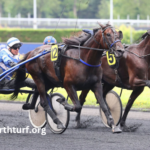LA Voyeuse Sur is a captivating concept that intertwines themes of observation, voyeurism, and societal reflection. Rooted in artistic and literary traditions, it challenges our perceptions of privacy and intimacy in an increasingly digital world. This article aims to explore the various dimensions of LA Voyeuse Sur, examining its historical context, cultural significance, and the myriad interpretations it invites. By delving deep into this subject, we will uncover why LA Voyeuse Sur resonates with contemporary audiences and what it reveals about our society today.
What is the Concept Behind LA Voyeuse Sur?
At its core, LA Voyeuse Sur translates to “The Observer” or “The Voyeur.” It encapsulates the act of watching or observing others, often without their knowledge. This concept is deeply rooted in psychological and sociological studies, which explore the dynamics of power, intimacy, and the human desire to connect with others.
In literature and art, LA Voyeuse Sur can manifest in various forms, such as characters who observe others as a means of understanding their own desires and fears. This act of observation can range from benign curiosity to intrusive scrutiny, reflecting the complexities of human behavior and relationships. For instance, in many narratives, the voyeuristic gaze can lead to moments of revelation or even ethical dilemmas, prompting readers or viewers to question the morality of their own curiosity.
Through the lens of LA Voyeuse Sur, we can explore how the act of observing can be both enlightening and unsettling, revealing deeper truths about ourselves and the world around us.
How Does LA Voyeuse Sur Manifest in Art and Literature?
The representation of LA Voyeuse Sur is prevalent in various artistic and literary works, where it serves as a critical narrative device. For example, in classic literature, characters like Jay Gatsby in F. Scott Fitzgerald’s “The Great Gatsby” exemplify the voyeuristic gaze by observing the lives of others while remaining isolated themselves. This dynamic invites readers to consider the implications of such observation, as it often leads to misunderstandings and tragic outcomes.
In visual arts, LA Voyeuse Sur often takes the form of paintings or installations that invite viewers to reflect on their own roles as spectators. Artists like Alfred Hitchcock have famously explored voyeurism through film, using camera techniques that encourage audiences to engage with the act of watching. Hitchcock’s films, such as “Rear Window,” exemplify this concept by placing viewers in the position of the observer, prompting them to grapple with the ethics of their gaze.
Moreover, contemporary art installations may invite participation, blurring the lines between observer and observed, making audiences acutely aware of their roles in the act of viewing. This dynamic is a central theme in LA Voyeuse Sur, as it highlights the tension between intimacy and distance, engagement and detachment.
What Are the Psychological Implications of LA Voyeuse Sur?
The psychological aspects of LA Voyeuse Sur are intricate and multifaceted. Voyeurism is often associated with the desire to gain knowledge about others while maintaining a safe distance. This need to observe can stem from various motivations, such as curiosity, insecurity, or a longing for connection.
From a psychological standpoint, LA Voyeuse Sur raises questions about the boundaries of privacy. As individuals, we are often torn between the desire for transparency and the need for privacy. This duality can create tension in our relationships, as the act of observing can lead to feelings of judgment or objectification. For instance, in the context of social media, people curate their lives for public consumption, inviting scrutiny while simultaneously craving intimacy.
Moreover, LA Voyeuse Sur can serve as a coping mechanism for individuals dealing with their own insecurities. By focusing on the lives of others, one may temporarily escape their own reality, albeit at the expense of genuine connection. This phenomenon speaks to the complexities of human behavior and the underlying motivations that drive our need to observe and be observed.
In What Ways Does LA Voyeuse Sur Reflect Modern Society?
In the context of modern society, LA Voyeuse Sur takes on new dimensions, particularly with the rise of technology and social media. The digital age has amplified our ability to observe others, as platforms like Instagram and Facebook encourage sharing and viewing personal moments. This shift has created a culture where boundaries between public and private life are increasingly blurred.
The phenomenon of “online voyeurism” highlights how LA Voyeuse Sur manifests in contemporary settings. People share curated glimpses into their lives, inviting observation while simultaneously navigating the consequences of such exposure. This dynamic raises important questions about consent and the ethics of viewing others’ lives, particularly when the line between authenticity and performance becomes obscured.
Furthermore, the impact of surveillance culture cannot be overlooked. In a society where cameras are ubiquitous and personal data is constantly collected, the themes of LA Voyeuse Sur resonate deeply. The implications of living under constant observation raise critical concerns about individual autonomy and the erosion of privacy.
Through this lens, LA Voyeuse Sur serves as a mirror reflecting the complexities of our relationships with technology and each other, prompting us to reconsider how we engage with the world around us.
How Does LA Voyeuse Sur Challenge Traditional Notions of Intimacy?
LA Voyeuse Sur challenges conventional ideas about intimacy by questioning the boundaries between observer and participant. Traditional notions of intimacy often emphasize closeness, trust, and vulnerability. However, the act of observing, especially without consent, can create a paradox where intimacy becomes tainted by distance and objectification.
In many narratives, the voyeuristic gaze complicates relationships. For example, in films like “Eyes Wide Shut,” the act of observing sexual encounters leads to a breakdown of trust and intimacy between characters. This dynamic illustrates how LA Voyeuse Sur can disrupt traditional forms of connection, highlighting the potential dangers of uninvited observation.
Moreover, the concept encourages us to explore the notion of consent in intimate relationships. In an age where personal boundaries are frequently tested, understanding the implications of observation is crucial. LA Voyeuse Sur invites us to consider how our actions impact others and whether true intimacy can exist alongside voyeurism.
Ultimately, the challenges posed by LA Voyeuse Sur urge us to redefine our understanding of intimacy, prompting deeper conversations about trust, consent, and the nature of connection in an increasingly interconnected world.
What Role Does Technology Play in LA Voyeuse Sur?
Technology plays a pivotal role in shaping the dynamics of LA Voyeuse Sur in contemporary society. The advent of smartphones and social media platforms has transformed how we observe and interact with one another. On one hand, technology has facilitated genuine connections by allowing people to share their lives with others. On the other hand, it has also created avenues for voyeurism that can lead to ethical dilemmas.
Social media platforms serve as modern-day stages for LA Voyeuse Sur, where individuals showcase their lives for public viewing. This curated display invites observation but also raises questions about authenticity and privacy. For instance, influencers often navigate the fine line between sharing their lives and maintaining a sense of privacy, exemplifying the complexities inherent in the voyeuristic gaze.
Moreover, technology has given rise to new forms of surveillance, both personal and institutional. From smart cameras to tracking software, the ability to observe others has become more sophisticated and pervasive. This evolution raises critical concerns about the ethical implications of constant observation and its effects on individual autonomy.
In this context, LA Voyeuse Sur becomes a relevant lens through which to examine our relationship with technology. It encourages us to consider the implications of our digital footprints and the extent to which we are willing to be observed in an increasingly connected world.
How Can We Navigate the Ethical Implications of LA Voyeuse Sur?
Navigating the ethical implications of LA Voyeuse Sur requires a nuanced understanding of privacy, consent, and the responsibilities that come with observation. As individuals, we must be mindful of the boundaries that exist between curiosity and intrusion. This awareness can help us cultivate healthier relationships both online and offline.
One approach is to actively engage in conversations about consent and privacy. By discussing these topics openly, we can establish clear boundaries and expectations within our relationships. This is particularly important in a digital age where the lines between public and private life are often blurred.
Additionally, fostering empathy is crucial when engaging with the concept of LA Voyeuse Sur. Recognizing the humanity of those we observe can shift our perspective from mere spectatorship to genuine connection. By approaching observation with kindness and consideration, we can mitigate the risks of voyeurism.
Moreover, advocating for ethical practices in technology and social media is essential. Supporting platforms that prioritize user privacy and consent can help create a safer digital environment where individuals feel empowered to share their lives without fear of unwarranted scrutiny.
Ultimately, navigating the ethical implications of LA Voyeuse Sur requires a commitment to understanding the complexities of observation, fostering empathy, and promoting respectful engagement in our interactions with others.
What Is the Future of LA Voyeuse Sur in Cultural Discourse?
The future of LA Voyeuse Sur in cultural discourse is likely to evolve as societal attitudes towards observation and privacy continue to shift. As technology advances and the lines between public and private life blur, the themes of voyeurism and observation will remain relevant in our discussions about human relationships.
In literature and art, we can expect to see more explorations of the complexities of LA Voyeuse Sur, particularly as artists and writers respond to contemporary issues related to surveillance and privacy. This could lead to innovative narratives that challenge traditional notions of observation, intimacy, and consent.
Moreover, as awareness of ethical concerns surrounding voyeurism grows, there may be an increased emphasis on responsible storytelling and representation in media. Audiences are becoming more discerning, and creators who prioritize ethical considerations in their work may find greater support.
In addition, the impact of social movements advocating for privacy rights and personal autonomy will likely influence the discourse surrounding LA Voyeuse Sur. As individuals demand greater control over their narratives, the act of observation may shift from passive scrutiny to active engagement, emphasizing mutual respect and consent.
In essence, the future of LA Voyeuse Sur will be shaped by our collective understanding of the ethics of observation, the evolving landscape of technology, and the ongoing dialogue about intimacy and connection in an interconnected world.
Conclusion
In conclusion, LA Voyeuse Sur serves as a thought-provoking concept that invites exploration of the intricate dynamics of observation, voyeurism, and intimacy. Its relevance in contemporary society is undeniable, as we navigate the complexities of human relationships in an age of constant connectivity and scrutiny.
By examining its manifestations in art and literature, its psychological implications, and its evolving role in modern culture, we gain valuable insights into our own behaviors and motivations. LA Voyeuse Sur challenges us to confront the ethical dilemmas inherent in observation, urging us to cultivate empathy and understanding in our interactions with others.
As we move forward in a world shaped by technology and shifting social norms, LA Voyeuse Sur will continue to be a lens through which we examine our relationships, our identities, and the ways we engage with one another. Embracing this concept with awareness and intention can foster deeper connections and promote a more ethical approach to observation in all its forms.



